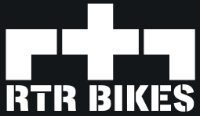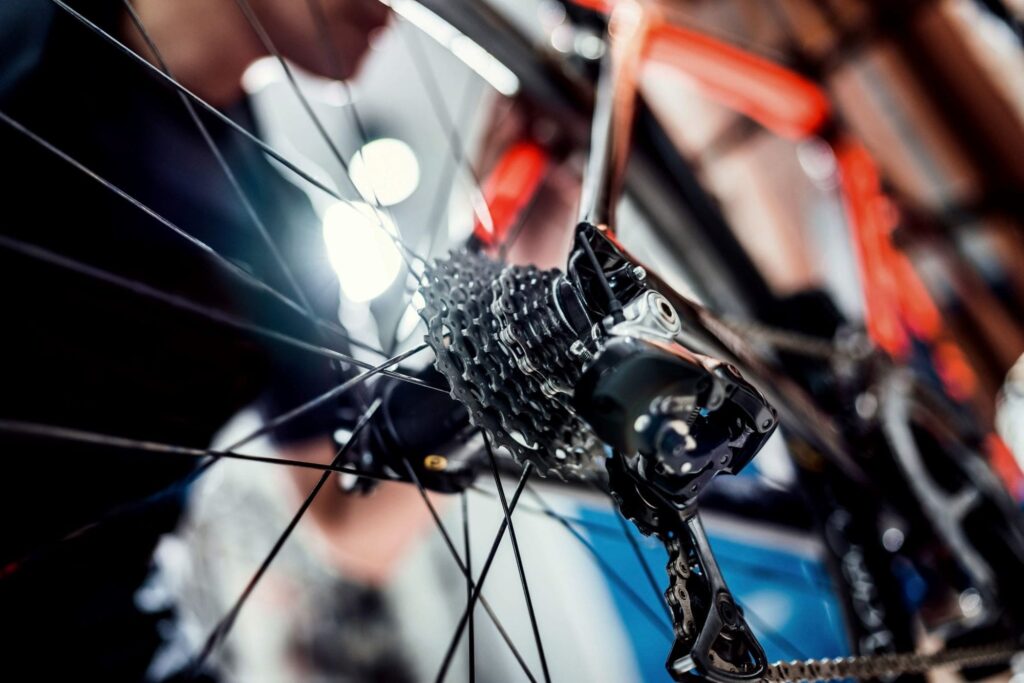A good bike is first and foremost a well-maintained bike. Not surprisingly, a unicycle may require systematic minor repairs if you ride it often! In order not to have to go to a service center with every little thing, a cycling enthusiast should have a pack of basic tools at home. Which ones? We are already responding! Introducing bicycle tools without which you can’t move.
What will you learn from this post?
- What bicycle tools should you have in your home workshop?
- Is it worth it to buy large tool sets to start with?
At a glance
Every avid cyclist should have the tools with which to perform basic service on his unicycle. The list of must-have equipment in a home bicycle workshop includes a multitool, tire spoons, a stationary pump or compressor and pliers. Protective gloves and a flashlight will also come in handy. Any repairs will be facilitated by a stable service stand, which can also be used on a daily basis for safe storage of the bike.
Basic bicycle tools in a home workshop
Even if you are not an avid handyman, sooner or later you will come to the conclusion that minor bike service is most conveniently done by yourself, at home. Changing a tube, lubricating a hub or adjusting brakes is, after all, something every cyclist should be able to do – and have the conditions for it in a home workshop! After all, in addition to skills, you need the right tools. Do you have them in stock?
1. multitool
A multitool is something you should have not only in your workshop, but always with you. Seriously! Not necessarily very elaborate, because operating something that looks more like a toolbox than a pocket knife is neither easy nor pleasant. You should certainly make sure that your universal tool includes the most commonly needed for bicycle repairs – a 3-6 mm Allen wrench, a Phillips screwdriver and a Torx T25 wrench.
2. tire spoons
There’s no fooling – catching a flat tire on a bicycle is a pretty normal thing. With the removal and installation of tires, however, it is much more difficult than perforating them. Spoons that you can hook into the spokes to lever up a tire and get at a damaged inner tube will make your life easier.
3. stationary pump
A small bicycle pump is a useful thing on the road, but in the workshop a large stationary pump with a built-in pressure gauge will prove much more practical. There are various models available on the market, so pay attention to the pressure range and the tips available in the kit when buying. For example, pumping with higher pressure (in the order of 8-10 bar) is advisable for road models, while low-pressure pumps work well for MTB bikes. If you have a car compressor, you can successfully use it in your garage in place of a pump.
4. cable ties
The so-called. Zips or triptychs are admittedly not a tool, but a universal piece of workshop equipment. For example, they can be used to rescue a broken derailleur cable on an ad hoc basis, or to attach brake armor to a fork or frame. A pair of triptychs is worth having not only in the workshop, but also in the pannier with handy tools on the road. When installing the band, don’t forget to cut off the excess end.
5. pliers with cutter
The pliers allow you to hold troublesome items, such as stretched cables. For minor bicycle repairs, those with slender tips that will reach even small spaces on the bike will work better. Equipped with a cutter, they will allow you to precisely cut the line, armor or the clamp mentioned in the previous point right off the bat.
Gradually replenish your workshop – what bicycle tools are worth buying?
When repairing a bicycle, versatile gadgets that will come in handy more than once in the garage also come in handy. So if you haven’t already done so, be sure to stock up on a headlamp to illuminate harder-to-reach areas, and work gloves to ensure that the grease on your hands is no longer your trademark. This is, of course, the basic set. The more you want to do yourself, the more tools in your home workshop will need to be. However, for the beginning such a set is completely sufficient – with it you will do the most important work on your bike!
Instead of spending a fortune on professional equipment and then getting frustrated that it’s lying fallow, give yourself time to complete a home workshop. Buy tools gradually as you gain more service skills. You’ll do most of the simple maintenance with a standard basic kit, and if you miss something, you’ll quickly sense it and be able to buy exactly what you need! In time, when you can boast of a good skill, you will certainly feel the real adventure of “fatter” cycling repairs beckoning you. Then it will be time for typical bicycle gadgets, such as pliers for cables and chain clips, a brake bleeding kit, a spoke wrench or… a bicycle scale!
Service stand
It is easy to damage the bike even more during some repairs. Or other equipment or household items nearby. All it takes is a moment of inattention, and a unicycle can score a spectacular capsize, taking a sad toll. Not to mention that repairing a bicycle swinging left and right, with having to hold it when you need both hands to work, is not particularly comfortable.
By supplying a service stand, you get rid of such problems. Such model as Brutus or Brutus Up Pro will ensure stable positioning and exposure of the unicycle. Mounting the bike is ultra-simple – just drive the rear wheel on the stand to fix it in the special rails. There is no way to tip the bike over even when washing it with a jet of pressurized water!
Of course, you can use the racks not only for repairs. It’s also a good and safe way to store your bike between trips. This will give your two wheels their own place in the basement, garage or hallway.
High-quality bike racks and hangers can of course be found at rtrbikes.com. So that your unicycle is always READY TO RIDE!
Image source: shutterstock.com


